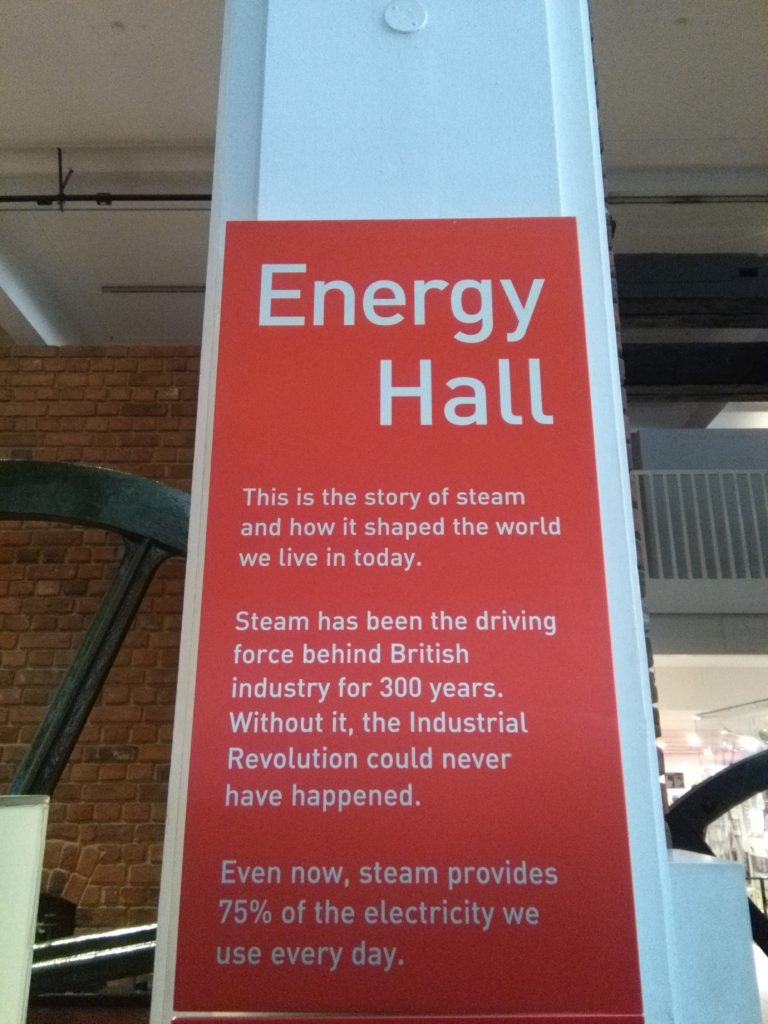The Energy Hall of the Science Museum of London

The Science Museum of London is on Exhibition Road, near Hyde Park. It was opened in 1857. The idea of a museum focused on science and technology was born after the first Great Exhibition of 1851 held in London. During this event, the Crystal Palace, a 39-meters high building of glass and iron was built. At the moment, the museum collects a huge number of objects which come from the story of engineering, technology and science and it also holds some interactive galleries.
The entrance of the museum holds the so-called Energy Hall, the room in which the story of the birth and the growth of steam engines is told to visitors.
The exhibition

Burnley Mill Engine
It was manifactured by the Burnley Ironworks Company in 1903. This 700 horsepower engine was installed in the Harle Syke Mill, a textile industry near Burnley. The mill was dismantled in 1970 and moved to the museum in 1979. The engine was capable to drive 1700 looms, thanks also to a belt system. It used steam at 11 bar. The use of these “slow” engines in industrial processes declined after the spread of electrical motors.
Old Bess and Lap Engine
The Old Bess is a “beam engine” manufactured by Boulton and Watt in 1777 which worked until 1848. It is the oldest surviving example of a “Watt engine”. This kind of engines was characterized by the separate external condenser and the rotary motion. The Old Bess worked in the Soho Mint which was part of the Soho Manufactory. The Lap Engine was realized by Boulton and Watt in 1788. It was employed in Matthew Boulton’s company, the Soho Manufactory. It was able to drive 43 polishing machines, used for the production of buttons and buckles.
Parson’s Radial Flux Turbine
It is the first turbine used to supply a yacht in 1894. The 30-meter-long experimental yacht was called Turbinia and suddenly became the fastest ship in the world at the time, starting the new era of marine propulsion. Steam turbines remained commonplace in ocean liners until 1960s, when diesel engines spreaded. This turbine worked on the Turbinia until 1896.

The James Watt’s workshop
In the Energy Hall you have the chance to walk in the original James Watt’s workshop, as it was in 1819. In James Watt and our World the private workshop of the scientist has been installed. Here there is the original forniture and up to 8400 objects which Watt employed during his work. Watt is so well known in England that he was the first engineer to be honored with a monument in Westminster Abbey, the house of poets, nobles and kings.

sciencemuseum.org.uk
The interactive galleries
The museum holds a lot of activities, galleries and events dedicated to children and students. Energy is the interactive gallery which deal with the energy field. It aims to attract the curiosity of boys and girls on the energy theme through some panels, quiz and activities. How to produce electricity, what is the transmission of energy, what is the renewable energy: all this is explained in a easy and interesting way. Are they already looking for the engineers of the future?
